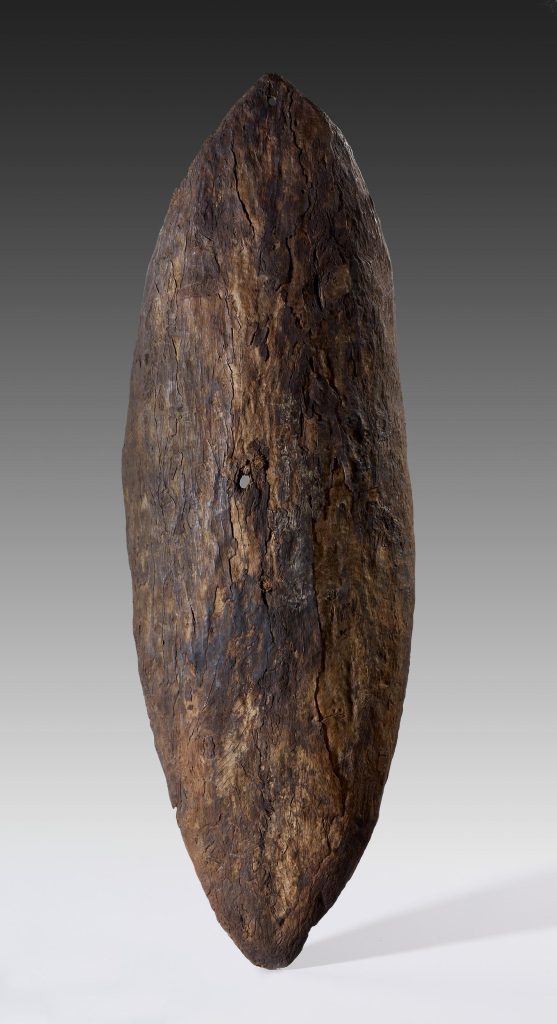3.2 The ‘Gweagal’ Shield
Nicholas Short

Listen to The ‘Gweagal’ Shield podcast.
View the podcast transcript.
Reflection
For my research project I created a historical narrative podcast on the Gweagal shield. The Gweagal shield was or is a wooden shield that Captain James Cook’s landing party stole from a group of Gweagal men when they first landed at Botany Bay in 1770. And it was taken back to England and was lost track of. But in 1978 the British Museum found an Aboriginal shield forgotten in their collection that they assumed to be this shield, and displayed it as such. And it was displayed like that until the late 2010s, when some historians traced the record of the Gweagal shield and realised that the shield in the British Museum was very likely not the same one. And so the location of the actual Gweagal shield is unknown and the origin of the shield in the British Museum is a mystery.
I wanted to create a podcast because with an auditory medium you can play with tension through time really effectively. Podcast scripts are a form of storytelling: there’s a narrative that you’re leading the listener through. But you have to make sure you’re always discussing historical information or methods while still being interesting, which can be difficult. You’re always grappling with tension to keep the listener interested, but also providing information to keep them satisfied. And that’s just a matter of making sure your editing is really focused. I had a script that I continually tightened again and again. I opened the podcast with a recreation of that original Botany Bay landing to build interest, and jumped off from there.
I chose to discuss the relationship physical objects have with history, and how those two relationships feed into one another. When we see a historical object—usually in a museum—it feeds our understanding of the time period that object comes from. But also, the histories we learn about objects feed into the objects themselves. It’s this two-way street of presence and interpretation. But when you have an object with an assumed history that is then proven to be misplaced or just outright wrong—the historical value dissipates, but there’s also an unnerving epistemological break that occurs—this whole structure of understanding collapses completely and all that’s left is the object. And that’s where claims from historical guardians such as museums cause trouble like the British Museum’s example: there’s an institutional damage that occurs from that unsettling of trust, but also an unsettling of trust with established histories themselves.
This unknown shield has the same effect the Gweagal shield would have if it was that object, but its anonymity allows it to be viewed as one small part of a very complex and a very old structure rather than this lone object it was previously that was overshadowed by a single event. History becomes more of a tool for recognising narrative, it becomes more useful that way. I wanted to capture that feeling in the podcast, I wanted the ending to be a recognition that there are historical narratives happening everywhere. It’s always complex and half-missing and unclear. And usually the straight-forward, obvious grand narratives you read are oversimplified or hold some hidden agenda in them. History is always a lot more complex.
January 2023

